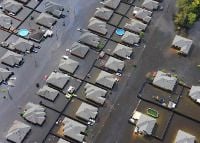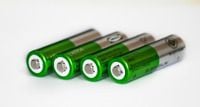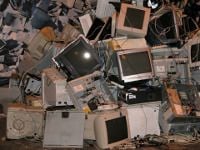)
As thousands of people begin the task of cleaning up, many are faced with the prospects of returning to home that's flooded.
Flood-affected homeowners will be hard at work removing carpets, gyprock walls and other cladding to prevent mould growth.
But before they can even think about begin rebuilding, many will have to remove electrical wiring, outlets, switches and more!
Electrical repairs have the potential for danger under just normal circumstances, you can read our blog on why electrical DIY may not be such a good idea!
But adding water to the mix increases the dangers significantly.
So while this is not a DIY project, owners returning to their flooded homes should still be prepared for the decisions that lie ahead.
While many of us know very well that water and electricity don't mix, there are many that don't know the full extent of this danger.
If you are faced with dealing with a flooded house, it is vitally (we cannot stress this enough) important to have a flooded home checked out by a licensed electrician [link to blog Why Use a Master Electrician?], or an SES official or even a firefighter before you renter.
Simply shutting off the power to a home at the main breaker switch isn't enough to guarantee safety.
If nearby homes are using generators for emergency power, that energy can flow back into the grid, creating a very risk of electrocution.
To render a home completely safe, an electrician may need to disconnect the electric meter.
Once a qualified professional gives the all-clear, it's safe to begin the most urgent clean-up tasks.
But the electrical repair work should not only be performed by licensed electricians, it should also be coordinated with other rebuilding efforts like the replacement of gyprock and insulation.
In some cases, submerged wiring in a flooded home may technically be salvageable. But even in the best-case scenario, keeping old wiring comes with some risk of corrosion or premature failure.
It's not just heavy rains and the subsequent flooding, yet, rainwater could also collect spilled chemicals, automotive fluids and other hazardous liquids that may leave behind a residue that's just as corrosive.
If your home floods, expect to replace all electrical components and equipment below the water line.
Sorting out what must be replaced and what can be salvaged is another job for a trained electrician.
It's important to have an electrician conduct a complete electrical survey before repairs begin to define the scope of work and after repairs are completed, to confirm that the home is functional and safe occupancy.
Any appliances or electronics that took on at least a few inches of water will likely need to be replaced.
Insulated appliances like refrigerators, freezers, ovens and tank water heaters are usually unsalvageable because the wet insulation cannot be replaced.
Appliances with motors or compressors are often destroyed when those components are below the waterline, but possibly may be saved if the water wasn't deep enough to reach the central unit but again, this needs to be checked thoroughly before any decision to keep it can be made.
If you have an appliance that you think may be salvageable, remove it from the home and allow it to air dry in a covered area for several days.
Most importantly, have it inspected, repaired and deemed safe by a repair professional before attempting to plug it in.
Electrical safety is no light matter you cannot take any chances with electricity at the best of times, let alone when water is involved.
Simon Caddy Electrical is a licensed electrician and member of the Master Electricians.
We service the Upper North Shore area including Hornsby, Wahroonga, Pymble, Turramurra, Killara, Lindfield, Roseville, Chatswood down to North Sydney.
| Tags:Electrical Safety |
)
| Posted in:Electrical SafetyElectrical Services |
)
| Posted in:Electrical ServicesBatteries & Battery Techonology |
)
| Posted in:EnvironmentalElectrical HazardsElectrical Waste |
)
| Posted in:Electrical ServicesData & Cabling |
